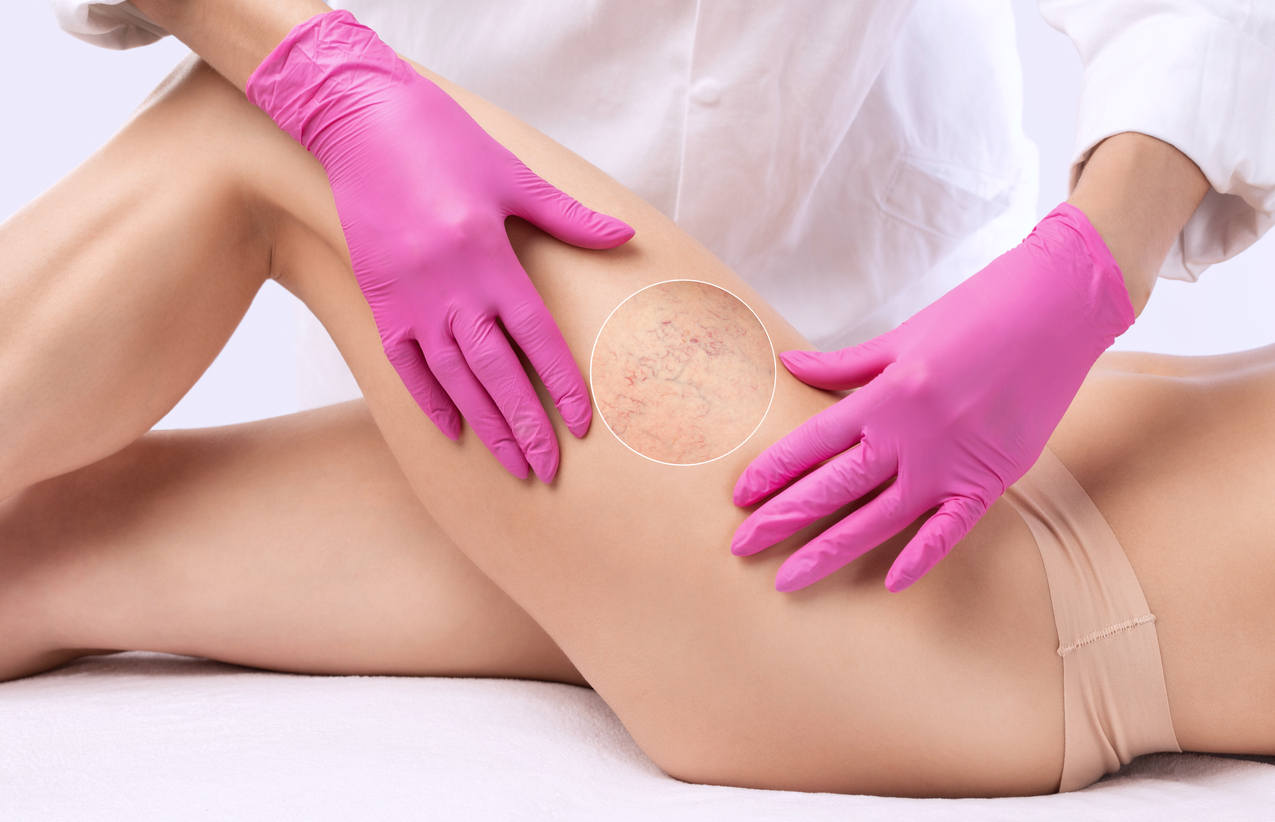Sclerotherapy, an effective treatment for varicose and spider veins, is one that we perform daily at the Vein Institute of NJ. It’s also a convenient, non-invasive procedure that is both simple and quick – most visits take about 20 minutes.
If you want to treat those small and unsightly veins located on the surface of the skin and remove the blemishes for a new, attractive look, sclerotherapy may be the answer. In this blog post, we will discuss how to prep for sclerotherapy treatment, how the procedure works, and what you should expect after treatment.
As always, our board-certified vascular doctors are here to guide you along the way. They will provide an initial consultation to ensure sclerotherapy is the right treatment for your condition, perform the appropriate procedure and make sure your follow up goes smoothly.
Pre-Sclerotherapy Instructions
Our flexible appointment times allow you to come in at a time of your choosing. Some basic things to know prior to the procedure include:
- Refrain from using moisturizers / lotions on the day of treatment.
- Some patients prefer to change into shorts rather than a gown supplied by our office. You may bring along a pair of shorts if that would make you more comfortable.
- Bring your compression stockings with you to each visit.
The Sclerotherapy Procedure
A sclerotherapy treatment uses an FDA-approved chemical called a sclerosant , which is injected directly into the vein through a tiny needle. Another recent advancement, foam sclerotherapy, combines a foaming agent such as carbon dioxide or air with the sclerosant, allowing treatment of larger varicose veins or larger areas of skin. With both procedures, the needle is so small that many of our patients say they hardly feel anything at all at the injection site.
Sclerotherapy is performed right in our offices. The treatment area is first cleansed. Then, the sclerosant is injected causing the vein to shrink, and then collapse. Over several weeks the body absorbs the collapsed vein and eliminates it. As the initial inflammation from the injection subsides, some veins may disappear completely, others may show little islets or isolated beads of trapped blood along the track of the vein. Generally speaking, most patients should expect an improvement of at least 50-70% over a few weeks after a single treatment. Follow-up visits to assess and fine tune the treatment are common.
There are a range of safe and effective sclerosants designed to meet the condition of each individual patient and vein. Sclerotherapy has taken its place among the minimally-invasive endovenous procedures – so-called because these procedures can be performed directly in the vein.
The number of veins injected in one session depends on the size and location of the veins. After the injections, you will be able to return immediately to your normal activities or workplace. It is common for our patients to stop in over their lunch hour for a session of sclerotherapy.
Bruising and pigmentation may occur after the sclerotherapy session. If bruising occurs, it usually disappears within one to two weeks. Although pigmentation almost always fades, it can last for several months. Scarring and other complications are rare.
Post-Sclerotherapy Instructions
While sclerotherapy treatment does not require hospitalization or down time, following the post-sclerotherapy instructions is important for a successful outcome. These are the steps we recommend:
- Stay active and leisurely walk after treatment.
- If gauze and or tape were used, remove in 4-6 hours and replace with compression stockings for a period of 24-48 hours depending on how extensive the treatment was.
- Your leg should not be exposed to prolonged sunlight (No tanning or sunbathing!) for one week. If you will be in the sun, please use sunblock liberally (SPF-30 or greater)!
- Minor discomfort or mild itching is common. An ice pack or Tylenol may help. Avoid anti-inflammatories for one week (Advil, Motrin, Nuprin) as these can blunt the desired response to treatment.
- Sleep with compression stockings (or ACE wraps) on the night of treatment.
- Shower in the morning and reapply the compression stocking or Ace wrap during daylight hours for the next two days.
- Avoid strenuous exercise for 24-48 hours.
While many cases of varicose and spider veins are a cosmetic problem, some patients experience aching and pain in the affected limbs. Sclerotherapy can help relieve these symptoms and serves as another critical benefit for the procedure.
To learn more or schedule an appointment with our doctors, click below:









.jpg?width=944&name=Castle-Connolly-Top-Doctors-Emblem-Large%20(4).jpg)